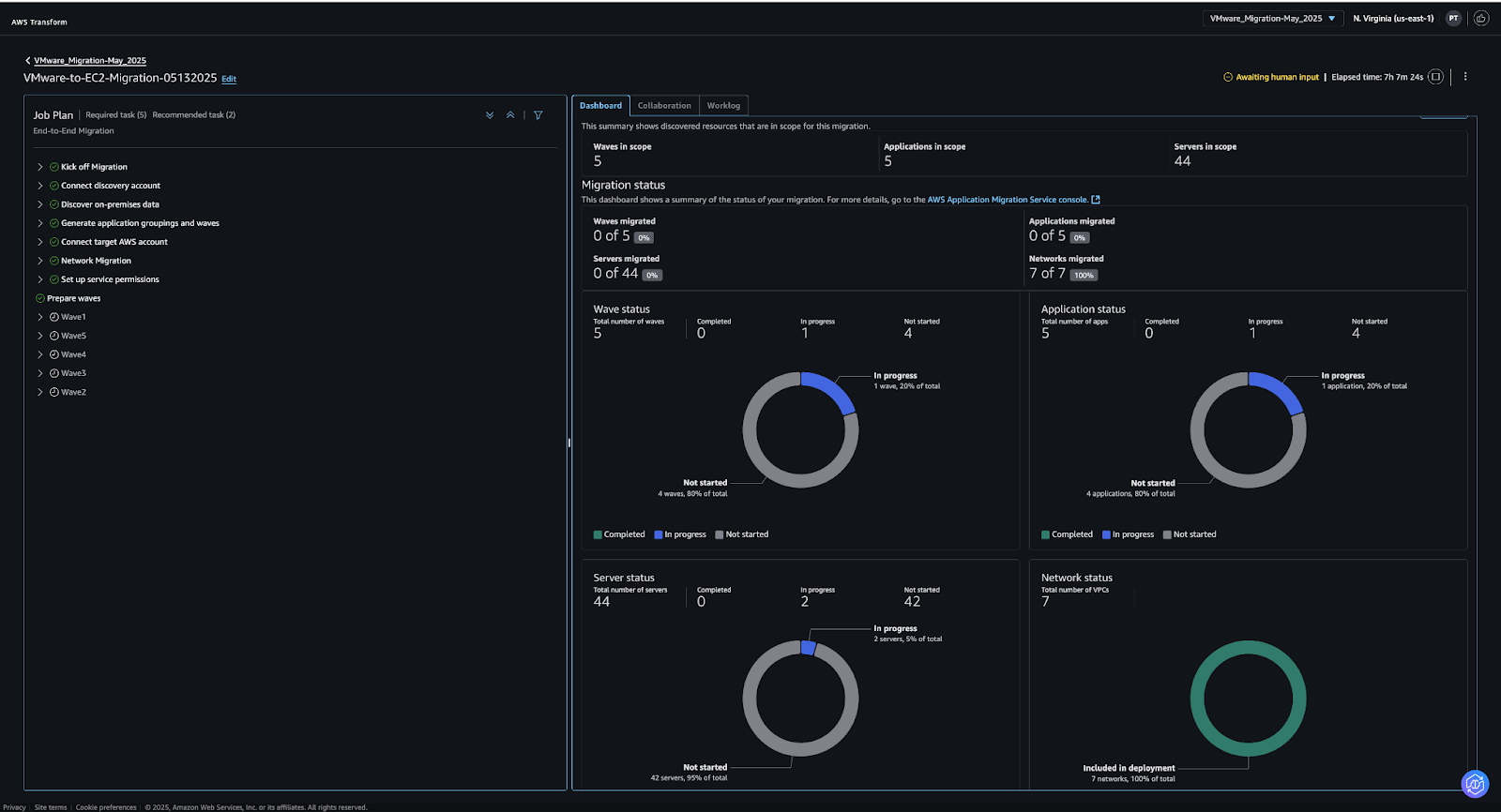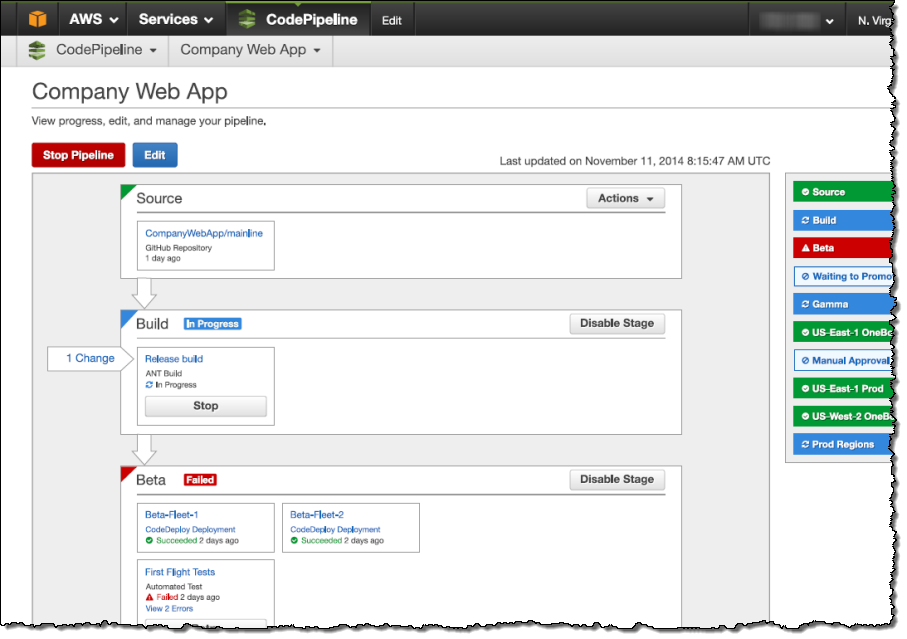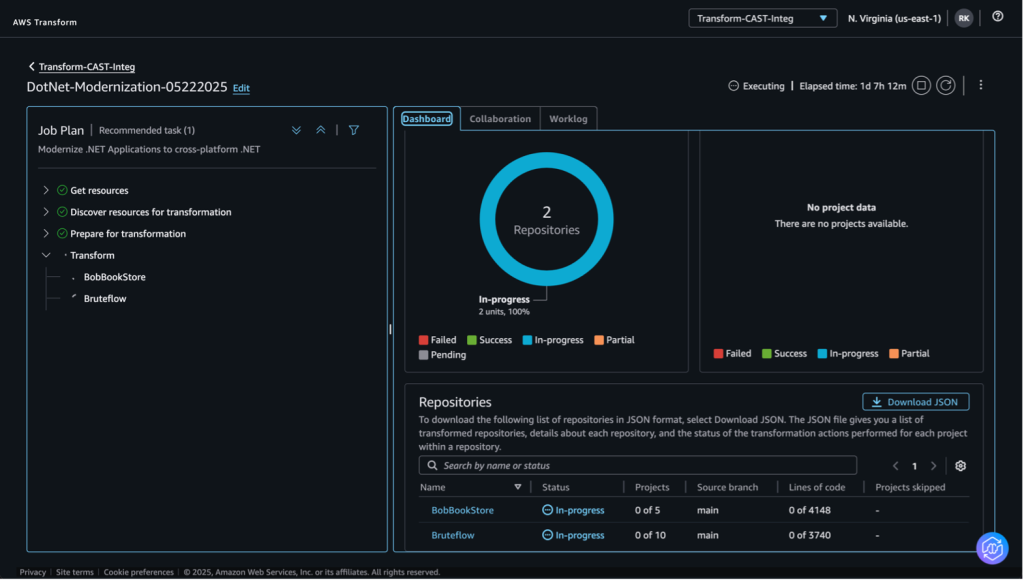What Is COBOL?
COBOL (Common Business Oriented Language) is a high-level programming language developed in the late 1950s for business, finance, and administrative systems. Its syntax was designed to be readable by individuals without deep technical backgrounds, making it accessible for business professionals and programmers alike.
COBOL programming became a standard for processing large-scale batch and transaction data on mainframes, which has resulted in its continued use in sectors such as banking, insurance, and government. Despite being over six decades old, COBOL persists in legacy systems due to its reliability, scalability, and the investments organizations have made in COBOL infrastructure.
Modernization initiatives aim to bridge the gap between these legacy systems and newer technology stacks, improving maintainability and integration. As cloud computing gains prominence, tools for deploying and managing COBOL workloads in platforms like AWS are becoming increasingly important to extend the value of existing applications.
AWS Tools for COBOL Deployment and Management
AWS Mainframe Modernization
AWS Mainframe Modernization is a fully managed service to support migration, modernization, and execution of mainframe workloads --- such as those written in COBOL --- on AWS. This service simplifies the process of rehosting or refactoring legacy applications, offering preconfigured runtime environments, automation tools for code analysis, and support for various programming patterns.
Organizations can use AWS Mainframe Modernization to reduce dependency on aging on-premises infrastructure while maintaining business continuity. The service also provides operational tools for monitoring, logging, and scaling legacy workloads natively within AWS. By removing the complexities associated with physical mainframes, it lowers maintenance overhead and improves disaster recovery options.
Source: Amazon
AWS CodeBuild
AWS CodeBuild is a fully managed continuous integration service that automates the build and test phases of software development, including applications written in COBOL. Developers can define their build environments using configuration files and integrate with source repositories such as GitHub, AWS CodeCommit, or Bitbucket.
CodeBuild provisions isolated build servers, compiles code, and can execute COBOL unit or integration tests, producing artifacts ready for deployment on AWS. CodeBuild's scalability and support for custom Docker images make it suitable for legacy technology stacks, allowing teams to incorporate COBOL compilation and validation into modern CI/CD pipelines.
This approach helps enforce quality standards and reduces manual intervention, especially during application updates or modernization efforts. It also supports automated triggers, enabling efficient and repeatable workflows with minimal operational overhead throughout the COBOL application lifecycle.
Source: Amazon
AWS CodePipeline and CodeDeploy
AWS CodePipeline is a fully managed continuous delivery service that automates the movement of code changes --- such as COBOL application updates --- through release pipelines. By integrating with other AWS services like CodeBuild and CodeDeploy, it orchestrates complex build, test, and deployment workflows tailored for mainframe modernization.
Teams can define multiple stages, add approval checkpoints, and use built-in notifications, ensuring strong controls and auditability as COBOL projects are deployed to AWS environments. AWS CodeDeploy complements CodePipeline by automating the deployment of COBOL artifacts to EC2 instances, on-premises servers, or containers.
It manages the rollout process, monitors deployment status, and implements strategies such as rolling updates and blue-green deployments to minimize downtime. This integration allows legacy COBOL application deployments to adopt DevOps best practices, improving reliability and accelerating delivery cycles without sacrificing operational stability.
Source: Amazon
AWS Transform
AWS Transform is a set of migration and code transformation tools that assist organizations in converting legacy COBOL codebases for execution on modern cloud platforms. These tools can analyze COBOL programs, refactor dependencies, and automate translation into modern languages or environments where suitable.
The focus is on reducing the manual work required to disentangle business logic from obsolete platform specifics, simplifying the modernization journey. With AWS Transform, enterprises minimize risks associated with large-scale manual migrations, optimize their COBOL applications for cloud execution, and lay the groundwork for future innovation.
The service ensures consistency, improves maintainability, and can enable hybrid strategies such as gradual refactoring or incremental replacement of core system components. This flexibly supports organizations in their transition from monolithic, mainframe-centric architectures to elastic, cloud-native environments.
Source: Amazon
Serverless COBOL Deployment
Serverless COBOL deployment on AWS involves running COBOL workloads in a serverless architecture, typically using AWS Lambda and supporting frameworks. By containerizing COBOL runtimes or using language bridges, organizations can execute specific COBOL routines as serverless functions, eliminating the need to manage servers or provision infrastructure directly.
This allows developers to focus on event-driven COBOL logic, improving agility for updating and scaling legacy code. The serverless approach offers immediate cost savings, as workloads consume resources only when executed, with automatic scaling based on invocation rates.
It also supports discrete modernization efforts, allowing pieces of core COBOL systems to be decoupled and re-architected incrementally. This method reduces operational complexity, enables rapid experimentation, and provides a bridge for integrating legacy logic with modern cloud services without a wholesale rewrite.
Benefits of Deploying COBOL Projects on AWS
Modernizing COBOL applications with AWS delivers several strategic and operational benefits, particularly for organizations aiming to reduce technical debt and address workforce limitations tied to legacy technologies:
- Preserving core logic: AWS Mainframe Modernization Code Conversion enables the transformation of Assembler programs into COBOL, allowing organizations to consolidate and simplify their mainframe environments. This helps organizations preserve core logic while making it more maintainable and easier to integrate into cloud-native workflows.
- Cost reduction: By converting Assembler to COBOL and deploying on AWS, companies can eliminate the need for expensive mainframe hardware and reduce operational overhead. The conversion process is tool-based and automated, avoiding manual rewrites that are time-consuming, error-prone, and dependent on rare skill sets. This self-service model accelerates transformation initiatives and improves development productivity.
- Improved agility: AWS enables COBOL workloads to operate in flexible environments, including various COBOL runtimes compatible with AWS infrastructure. Converted COBOL code can be replatformed or refactored using AWS tools, which supports incremental modernization strategies and faster deployment cycles. The resulting systems are easier to evolve, integrate, and test using cloud-native services and DevOps practices.
- Improved resilience and maintainability: With AWS's managed services, modernized COBOL applications gain access to security, monitoring, and disaster recovery capabilities. This improves business continuity and reduces risks associated with aging mainframe systems.
Tutorial: Building and Deploying COBOL Db2 Programs on AWS
This tutorial outlines how to build COBOL programs with embedded Db2 SQL using AWS CodeBuild and the AWS Mainframe Modernization Replatform tools. The focus is on compiling and binding COBOL Db2 applications in the cloud, preparing them for deployment within the AWS Mainframe Modernization runtime.
Source: AWS
Step 1: Set Up Prerequisites
Before beginning, ensure you have the following:
- An AWS account with administrative privileges.
- A COBOL program with embedded SQL or use the provided sample (CDB2SMP.cbl).
- An IBM Db2 environment (z/OS or LUW) accessible from your AWS VPC.
- IBM Data Server Client installed and uploaded to an S3 bucket.
- A VPC with private subnets configured for CodeBuild access.
- A Git-based code repository connected to AWS CodePipeline.
- AWS Secrets Manager configured with Db2 credentials in JSON format.
Step 2: Prepare the Source and Build Files
Commit the COBOL source code and a buildspec.yml file to your repository. The buildspec should include commands to:
- Download and extract the IBM Data Server Client.
- Configure the environment and credentials for Db2 access.
- Run the precompile, compile, and bind steps.
AWS Secrets Manager is used to securely inject database connection details at runtime.
Step 3: Configure the Build Environment
Create a CodeBuild project using a custom Amazon ECR image that includes the AWS Mainframe Modernization Replatform tools. Specify:
- Linux container environment.
- The ECR image:
673918848628.dkr.ecr.<your-region>.amazonaws.com/m2-enterprise-build-tools:9.0.7.R1.
- The IAM role with permissions to access S3 and Secrets Manager.
- VPC, subnets, and security group allowing access to the Db2 host.
Step 4: Define the Pipeline
Use AWS CodePipeline to orchestrate the build process:
- Configure the source stage to monitor your repository.
- Add a build stage that triggers the CodeBuild project.
- Skip the deploy stage (this pattern focuses only on build and bind).
Step 5: Validate the Build Output
After the build completes:
- Review logs in the CodePipeline and CodeBuild consoles to confirm success.
- Query the SYSIBM.SYSPLAN table in Db2 to verify that the bound package reflects the latest build.
Example query:
SELECT CAST(NAME AS VARCHAR(10)) AS name, VALIDATE, LAST_BIND_TIME, LASTUSED, CAST(PKGVERSION AS VARCHAR(10)) AS PKGVERSION
FROM SYSIBM.SYSPLAN
WHERE NAME = 'CDB2SMP'
ORDER BY LAST_BIND_TIME DESC;
Step 6: Automate Where Possible
While this tutorial walks through a manual setup, the entire process can be automated using infrastructure-as-code tools like AWS CloudFormation, AWS CDK, or Terraform for repeatability and scalability.
By following this pattern, you can modernize COBOL Db2 applications incrementally --- offloading compilation and binding from legacy systems and paving the way for full deployment in AWS-managed environments.
Conclusion
Deploying and modernizing COBOL applications on AWS provides a practical path for extending the life of critical legacy systems while unlocking the benefits of cloud-native infrastructure. With services like AWS Mainframe Modernization, CodeBuild, and CodePipeline, organizations can automate COBOL development workflows, improve operational efficiency, and integrate seamlessly with modern ecosystems. This approach helps mitigate risks tied to aging mainframes and scarce COBOL expertise, enabling incremental modernization strategies.






